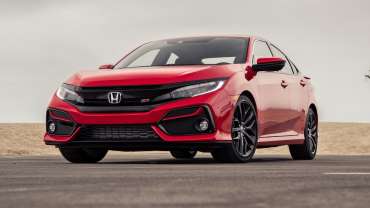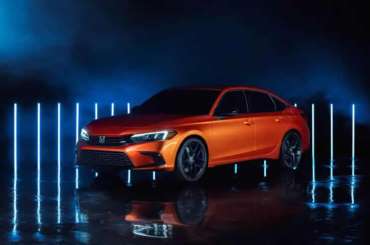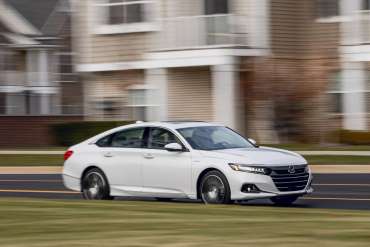Displaying items by tag: Honda
2020 Honda Civic Si Long-Term Review: The Goldilocks of Sports Sedans
Minor concessions in comfort return huge gains in driver engagement.
Buying a performance car often costs more than money; it costs comfort and convenience. If you're buying a 2020 Honda Civic Si, though, it doesn't have to.
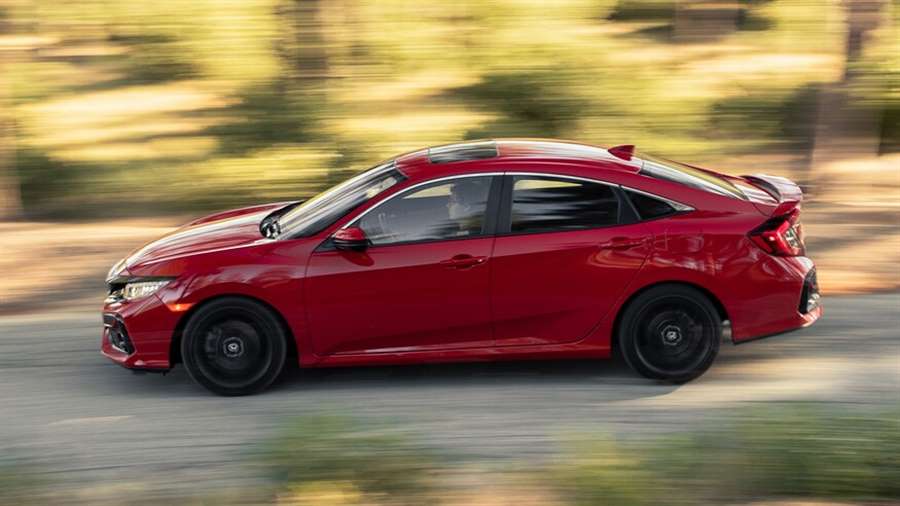
The Civic Si is essentially a mono-spec vehicle. As such, it rings in at just $26,155, making it one of the cheapest sports cars on the market in the best way possible. For that price, you get 31 more horses than a standard Civic, two-mode electronically controlled dampers, and a limited-slip differential. We spec'd ours with the $200 High-Performance Tire (HPT) option, but aside from that, all you could add to this car are some dress-up parts, a wireless phone charger, and an auto-dimming rearview mirror. The last two would've been nice, but we easily lived without them.
2020 Honda Civic Si: The Cost Of Caring
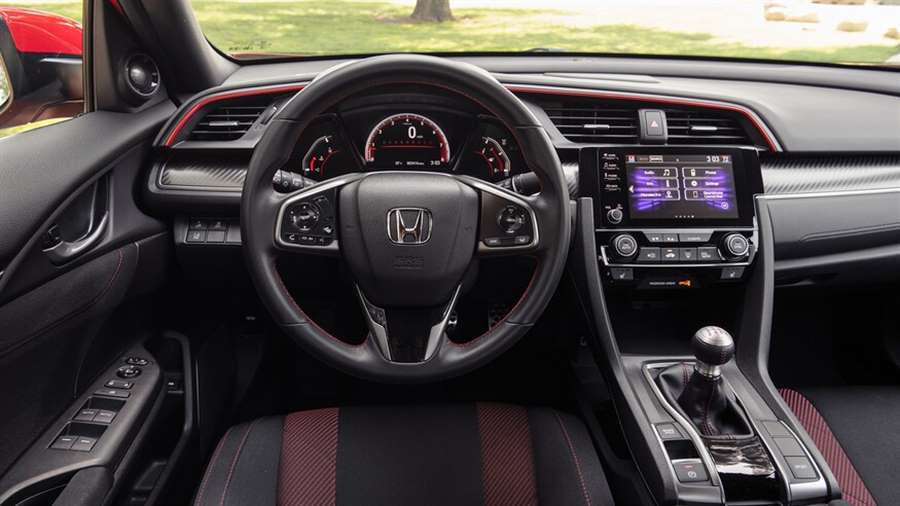
The Civic Si doesn't cost much in terms of comfort, either. The standard setting for the adjustable shocks is firmer than that of the average compact sedan, but not much. The shocks get firmer still in Sport mode, but that's just for when you're pushing the car on a good road. The front seats have big bolsters on the sides to keep you in place, but they're big, soft pads, not rigid extensions. If the Si is any louder inside than a standard Civic, it's not enough to notice (interior noise has long been a Civic weak spot).
The Civic Si costs almost nothing so far as convenience is concerned—provided you don't consider driving a stick shift in traffic inconvenient. In sedan guise, it gives up nothing in rear-seat space or access, and you get a big, secure trunk. And although there's no navigation option, it does come with Apple CarPlay and Android Auto compatibility so you can use your phone's navigation instead.

In fact, the Civic Si is comfortable and convenient enough that my wife and I didn't have a second thought about taking it on a three-hour journey to celebrate our anniversary at a house—with a pool—we rented. I thought for sure we'd stuff the car to the roof with clothes, food, drinks, and entertainment for a week, but we barely filled the trunk. Hours on the freeway to and from were no big deal, as the car was neither too stiff nor too loud for a road trip (nor were the seats too stiff).
On this particular trip, the Honda was just a nice little compact sedan with some extra zip for passing lane hogs. On other trips, especially those up into the mountains to go hiking, it was the best sports sedan for the money on the market (the Civic Type R is a hatchback). The composure of the chassis could teach things to more than a few sports cars that cost three times as much.
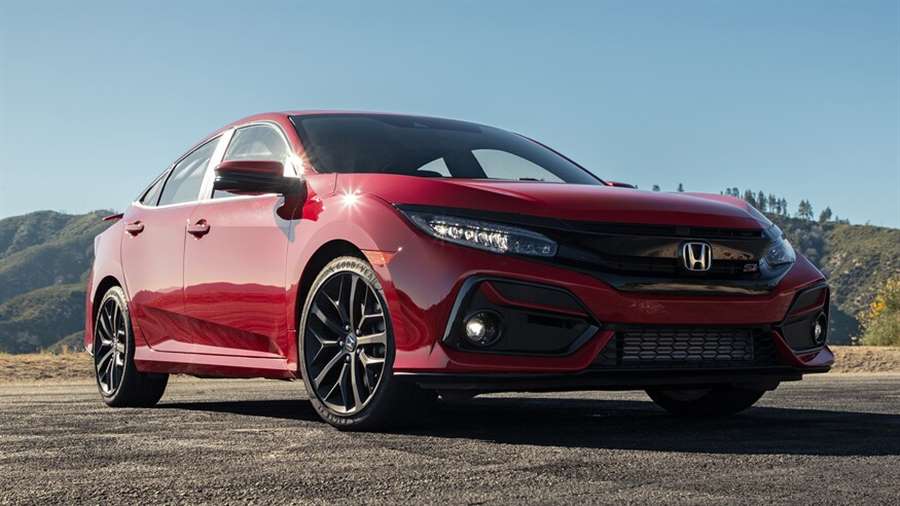
2020 Honda Civic Si Sedan: Momentous Performance
The Civic Si is what we call a momentum car. With 205 hp, it's no performance monster, but at 2,900 pounds, it's light enough to chuck about without constantly needing to slam on the stoppers. There's a delightful dance to be had in braking just enough to safely make the corner without losing any more momentum than absolutely necessary. The brakes, which aren't even upgraded past a set of performance pads, stand up to anything you can throw at them, which isn't much because again, you don't really have to slow down much for most corners. On the way out, the Civic Si's limited-slip lets you get back on the power early and pull it out of the corner, making the most of every pony. The manual transmission, the best of any this side of a Porsche, never lets you miss a shift, and the pedals are perfectly spaced for heel-toe downshifting.
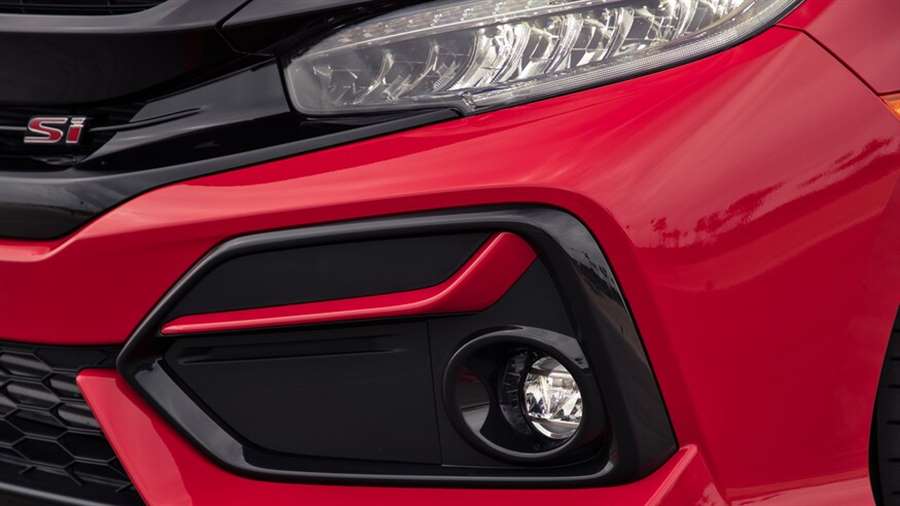
Its shortcomings are few and far between. If you're something of a drag racer, this isn't the car for you. Although the Civic Si feels quicker than it is, it's still held back by an engine that lags below 3,000 rpm and runs out of steam a thousand rpm before redline. The little Honda sedan is best when hustled on a road where you can keep both its speed and the engine's speed up. Around town, you're best off shifting before the turbo switches on, and when you're hustling, short-shifting. You'd also be well advised to keep a rag in the car to protect your hand from the cool-looking but scalding-hot or freezing-cold aluminum-topped shifter. When you're done driving, make sure to wait until the engine actually stops running after you switch off the car. If you release the clutch in gear too quickly ... well, it could get ugly.
It's easy to overlook the Civic Si when the Civic Type R is right there on the lot and only $11,500 more, but whether you're on a budget or just not ready to make the compromises its more powerful kin demands, the Si delivers. It's rewarding to drive on the best roads and comfortable on the commute. Ultimately, the Civic Si demands very little in exchange for the fun it provides, leaving you with a practical sedan every other day of the week.
Source: motortrend.com
Honda Civic Prototype Revealed, and It’s Pretty Much the 2022 Civic
Honda parlayed its sponsorship of esports, where it’s the official automotive sponsor of Team Liquid, to reveal the prototype of the next generation of its popular (and Cars.com comparison-winning) Civic compact car on the streaming platform Twitch. If you don’t know what Twitch is, ask your kids or U.S. Rep. Alexandria Ocasio-Cortez, D-N.Y.
Taking a page from Nissan and its Z Proto, the Civic prototype isn’t a fanciful concept but a very close to production-ready look at the new Civic sedan we’ll see early in 2021. We’ll have to wait longer to see the hatchback, however (Honda already axed the coupe). We’ll also need to wait for details on performance versions like the Si or the Type R. But enough about what this prototype isn’t — let’s talk about what it is.
Updated Exterior Styling
Up front, the Civic prototype ditches the current version’s large, fake “air intakes” at the corners of the bumper for angular elements that sit beside the split grille’s larger lower front opening. Slimmer-looking headlights give the prototype a sportier look than the current Civic’s non-Si or Type R design.
Along the sides are subtle, sculpted lines that evoke the new Acura TLX or, outside of the Honda family, Lexus IS, giving the prototype a more premium look. For wheels, Honda chose a set of black five-spokes that offset the metallic orange paint, a belated taste of Halloween. The rear forgoes the current Civic’s chevron taillights extending to the decklid for more traditional-looking thin units. The roofline borrows a lot of the current Accord, with a slope that blurs the line between sedan styling and liftback or hatchback styling.
Honda also wanted to improve cabin visibility and moved the A-pillars rearward, out of the driver’s line of sight. It also mounted the side mirrors to the doors for a clearer view out the side windows.
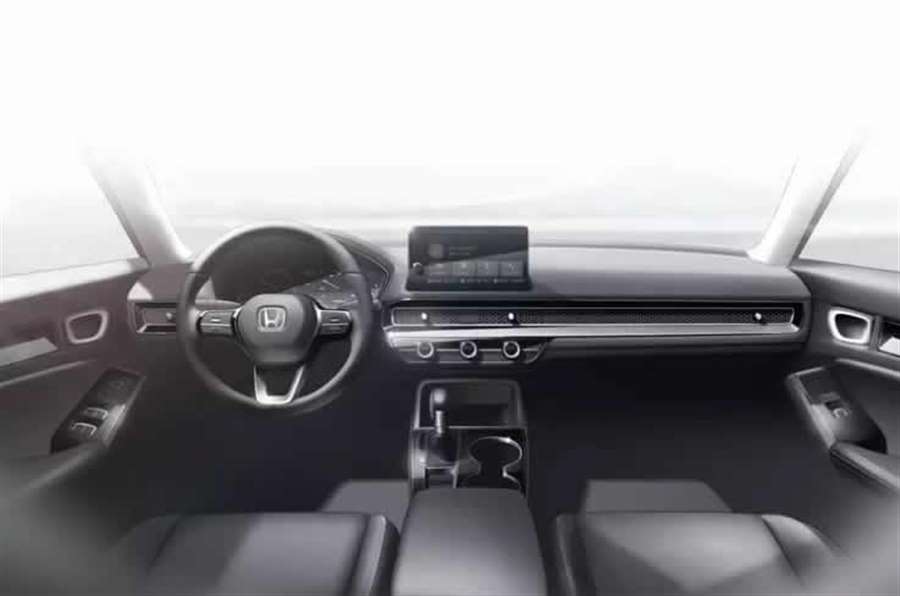
Cleaner Aesthetic Inside
Unlike the exterior, Honda only provided a sketch of the prototype’s interior, but it shows a cleaner and simpler look reminiscent of the e Prototype electric city car. New technologies that will debut on the next Civic include a digital instrument cluster and a 9-inch infotainment screen. A bummer: The infotainment screen shows only one physical control, likely the volume knob.
An interesting design touch is a single honeycomb mesh insert that runs horizontally across the length of the dashboard, concealing the air vents without impeding air flow because Honda deemed the vents “visually busy.”
Safety First
Safety remains a priority for Honda with the next Civic, starting with as-of-this-writing “multiple new active and passive safety systems,” including unspecified updates to the Honda Sensing suite of safety tech and “new airbag designs.”
Honda also said it updated the body structure to improve occupant and pedestrian protection in a collision. The more rigid body structure will also improve the Civic’s driving dynamics, Honda claims.
Pricing, Release Date and Other Things We Don’t Know Yet
Since this is a prototype, that does mean some details aren’t clear yet. We don’t know how powerful the next Civic’s engines will be, though Honda says they will be more powerful and more fuel-efficient. Transmission choices are also unclear, though the interior drawing shows an automatic gear selector. We also don’t have a clear picture regarding pricing, the aforementioned hatchback or performance variants.
Honda says the 2022 Civic will arrive in the late spring of 2021. Between now and then, we’ll likely see the additional variants, get more details about the official production version and, if we’re lucky, be able to drive it and tell you what it’s like.
Source: cars.com
Tested: 2021 Honda Accord Hybrid Polishes a Winning Formula
A range of subtle updates for the 2021 model year improve the Accord's tech quotient without altering its excellence.
The Honda Accord offers an unusually broad breadth of appeal. Among the family sedan's many trims and powertrains, there's truly something for everyone—and each version is mighty compelling in its own way. There are affordable models for those on a budget, Sport models with handsome curb appeal, the upscale Touring trim offering near-luxury interior appointments, and the Hybrid providing fuel efficiency without sacrificing refinement. Honda has revised the lineup for 2021, but there's little need for hand-wringing here. Besides the elimination of the six-speed manual transmission, there isn't anything in the refresh to diminish the Accord's overall excellence. And it improves in a few meaningful ways.
Nip and Tuck
If Honda's freshening of the Accord for 2021 seems especially light, that's because it is. Tweaks at the front include a slightly wider grille and updated lighting elements, which include all-LED arrays on EX trims and above. Inside, the previously optional 8.0-inch infotainment touchscreen is now standard, and Honda has added rear-seat USB ports, a wireless smartphone charging pad, and wireless connectivity for Apple CarPlay and Android Auto as options.
HIGHS: Smooth and efficient powertrain, upscale trims deliver a near-luxury look and feel, generous standard features.
Safety and driver-assistance features are improved for 2021 as well. Honda recalibrated the Accord's lane-keeping assist and adaptive cruise control systems to behave more naturally. After a brief drive on the highway in heavy traffic, we can confirm that the adaptive cruise control no longer exhibits the rubber-band behavior of the 2020 model, instead allowing the Accord to slow more gradually as it approaches traffic and quickly get back up to speed once the left-lane dawdlers move over.
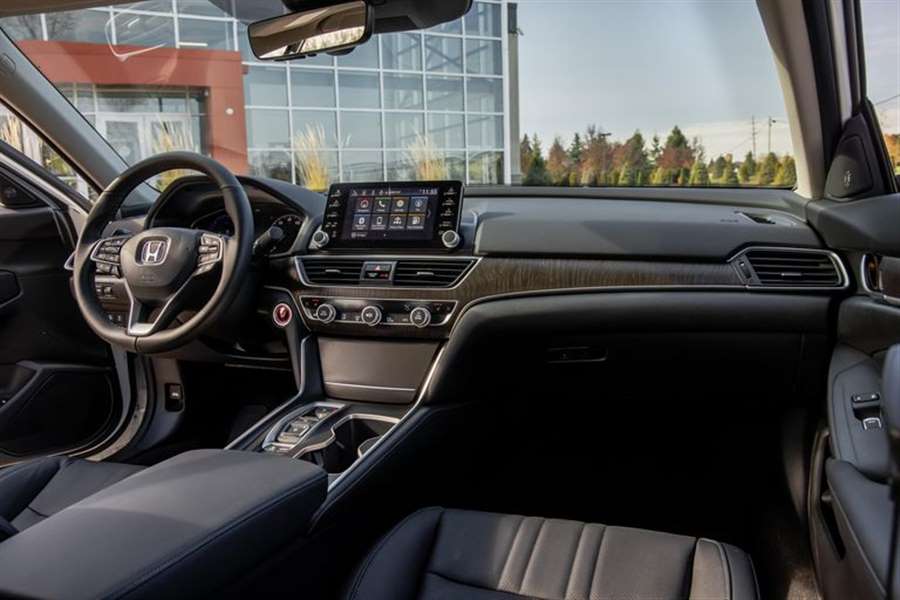
Our $38,050 Touring Hybrid test vehicle came loaded with features, including a head-up display, heated and ventilated front seats, leather upholstery and attractive 19-inch wheels. It also featured a new low-speed automated emergency-braking system that will apply the brakes if the driver is about to bump into an object at speeds between 1 and 5 mph. The only option was the sparkly Platinum White Pearl paint job, which cost $395.
Under the Hood
The Accord's crisp handling, balanced ride, and quiet cruising demeanor all carry over unchanged. The suspension tuning strikes a nice balance, with the Accord delivering confident handling while managing to expertly edit out road imperfections.
LOWS: Styling updates are a little too subtle, clamorous engine sound under heavy throttle, EV mode only goes for about one mile.
Honda made some slight adjustments to the hybrid system's power delivery for 2021, with the intention of providing stronger acceleration in Sport mode. The alterations are predictably subtle. At our test track, the 2021 model pulled off a 7.1-second zero-to-60-mph time, which is similar to the last version we tested in 2018. What's more noticeable are the changes to the power delivery in the normal driving mode, which exhibits a calmer demeanor under acceleration.
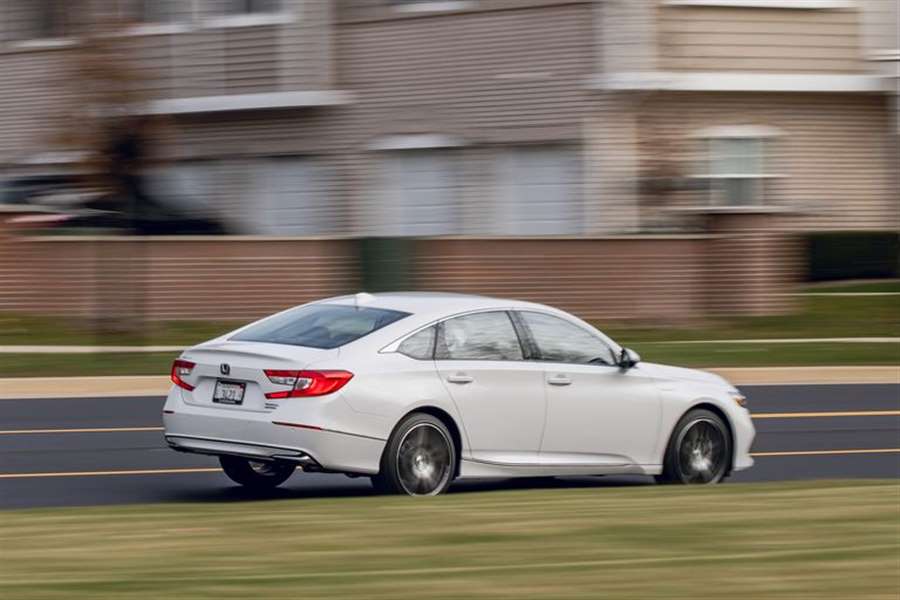
The Honda's hybrid powertrain is unlike any other in the market. The 143-hp 2.0-liter inline-four can generate electricity or directly drive the wheels in low load situations (think highway). In most situations, the 181-hp electric motor provides the propulsion. When you crack the whip, both the engine and motor combine for 212 horsepower, but off the line the Accord feels like a torquey EV because that's what it is; the electric motor makes 232 lb-ft of torque at 0 rpm.
As in the pre-facelift models, the 2021 Accord Hybrid still exhibits some coarse grumbles from the engine under heavy throttle. Fortunately, fuel economy remains practically the same, with the 2021 model's EPA combined estimate remaining 48 mpg and the highway score moving up a tick from 47 to 48 mpg. But that's for the lower-spec models riding on 17-inch wheels. The Touring trim rides on 19s and carries a 43-mpg combined and a 41-mph highway rating.
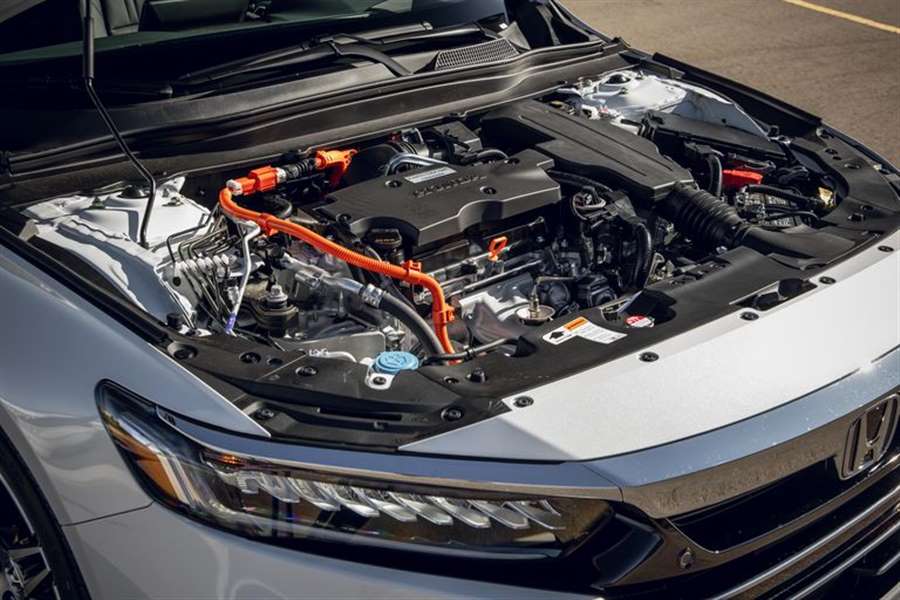
These updates, as minimal as they are, provide meaningful enhancements to the Accord's appeal without deviating from its winning formula. The alterations to the hybrid powertrain may not result in measurable improvements at the test track, but they help deliver a subjectively better driving experience. And the fact that Honda resisted the urge to jack up the price means that the Accord Hybrid Touring remains an outstanding anomaly—a luxurious sedan that gets economy-car mileage, no sacrifices required.
Source: caranddriver.com
Impact of Coronavirus on car industry in US
More than one million people are employed in automobile and auto parts manufacturing in the United States, and 1.3 million work for auto dealerships.
The companies bowed to pressure from union leaders and employees who called for protection from the pandemic that’s spread to more than 212,000 people in nearly every country across the globe.
According information which we receive from Ford Company the plans to close its factories from March 30 up to end of April in the U.S., Canada and Mexico. That pressure intensified after it was revealed on Wednesday that a worker at a Ford truck plant in Dearborn, Mich., had tested positive for the virus.
In addition to G.M., Ford and Fiat Chrysler, Honda, Toyota and Nissan also said they would idle their North American factories. The shutdown of car plants will force hundreds of companies that produce parts and components to follow suit over the coming days.
Ford, which has 55,000 U.A.W. employees, said those with at least one year of service would receive 75 percent of their regular pay through a combination of unemployment benefits and supplements paid by the company. G.M. is discussing a similar plan with the U.A.W.
From Honda we receive information that that will restart production at first week in April. They stop with production on Marth 23. They will provide full pay for the 27,000 employees in North America affected by the decision.
Nissan stop production on Mart 27, and also make a plan to restart production at first week in April.
According information from General Motors all North American factories will be closed and will evaluate the situation on a weekly basis after that.
Adjustment regarding stocks - that fallout from the coronavirus could send global auto production down 16% in 2020, fueled partially by an expected 20% decline in U.S. sales.

